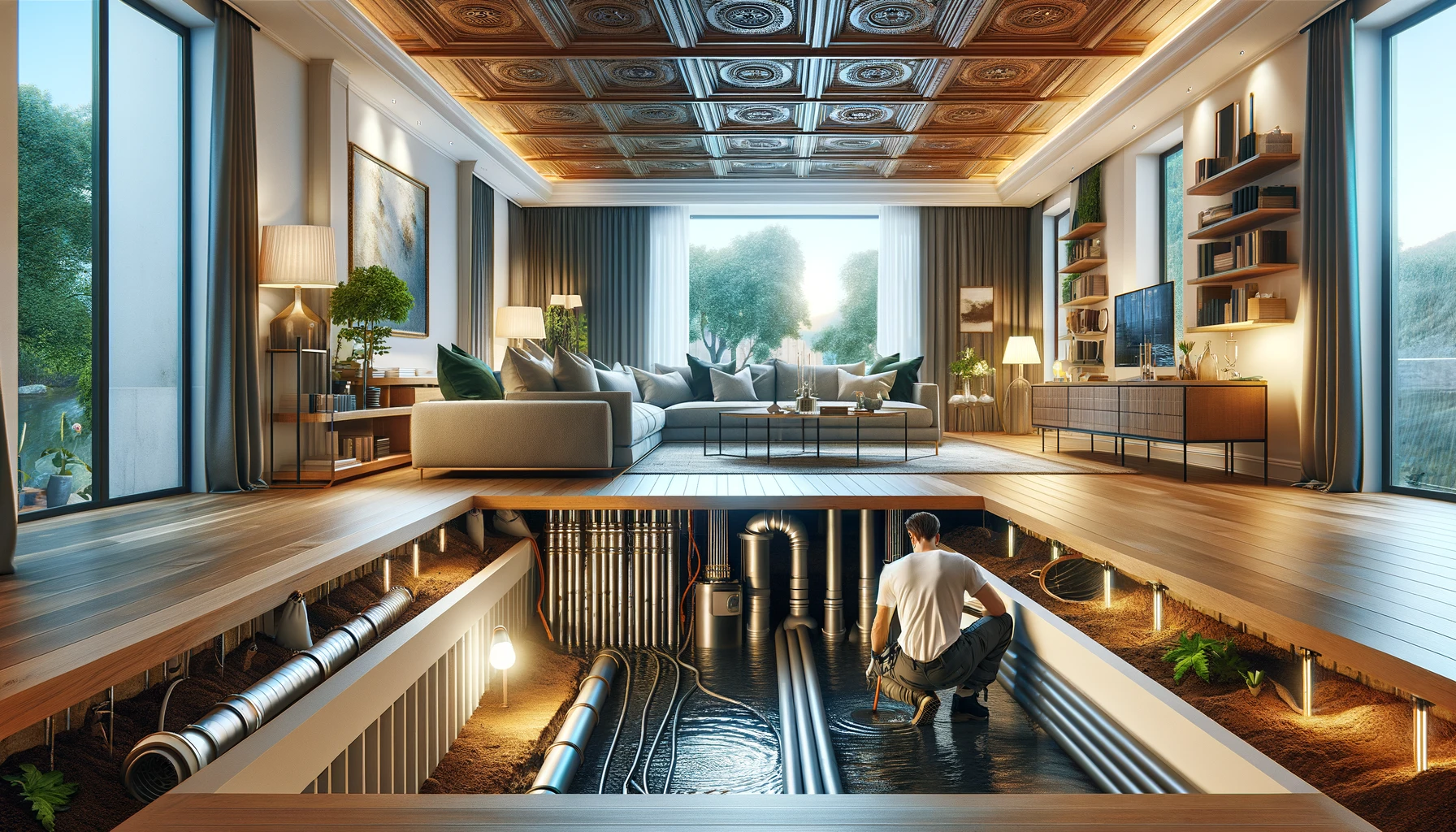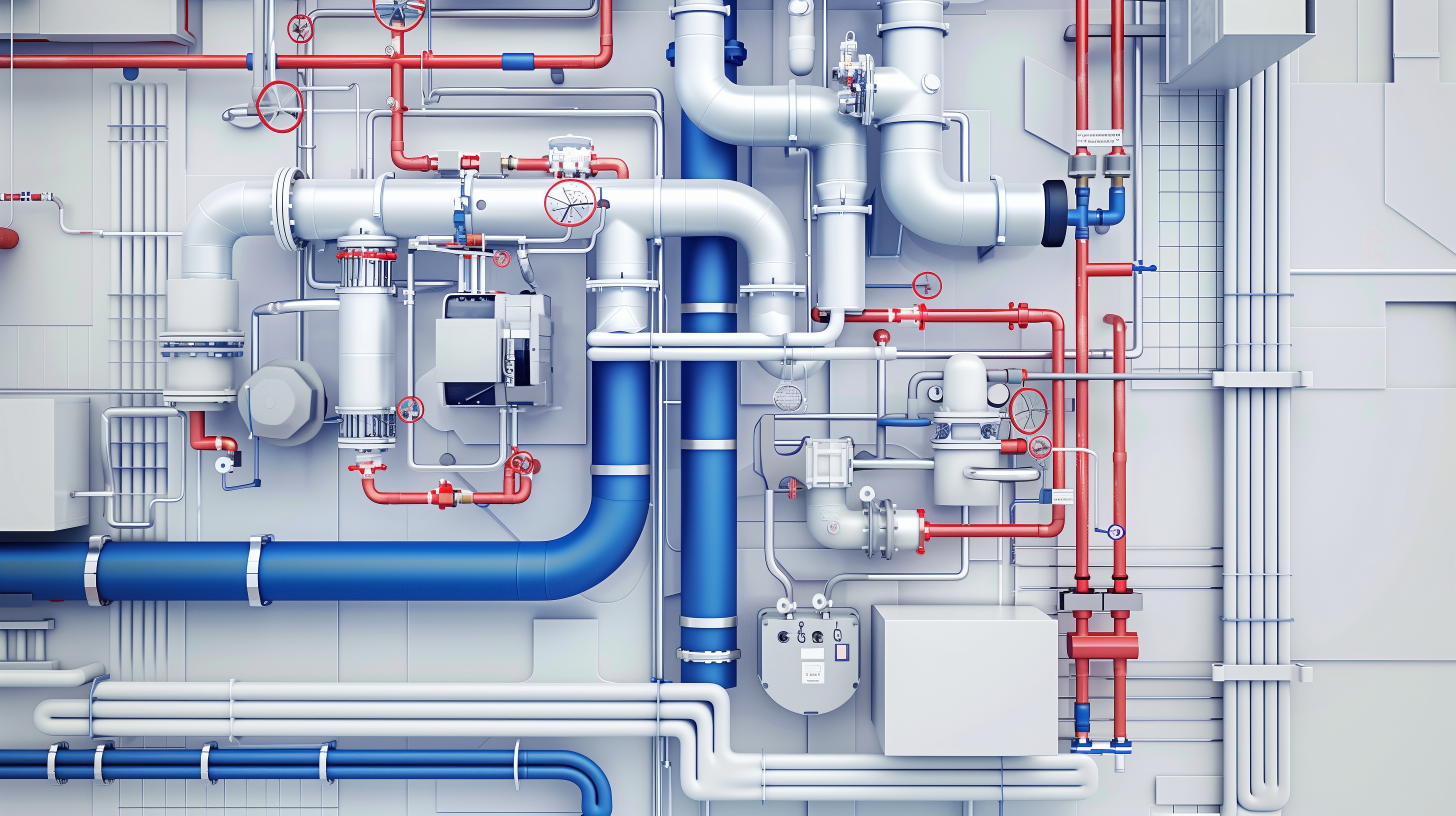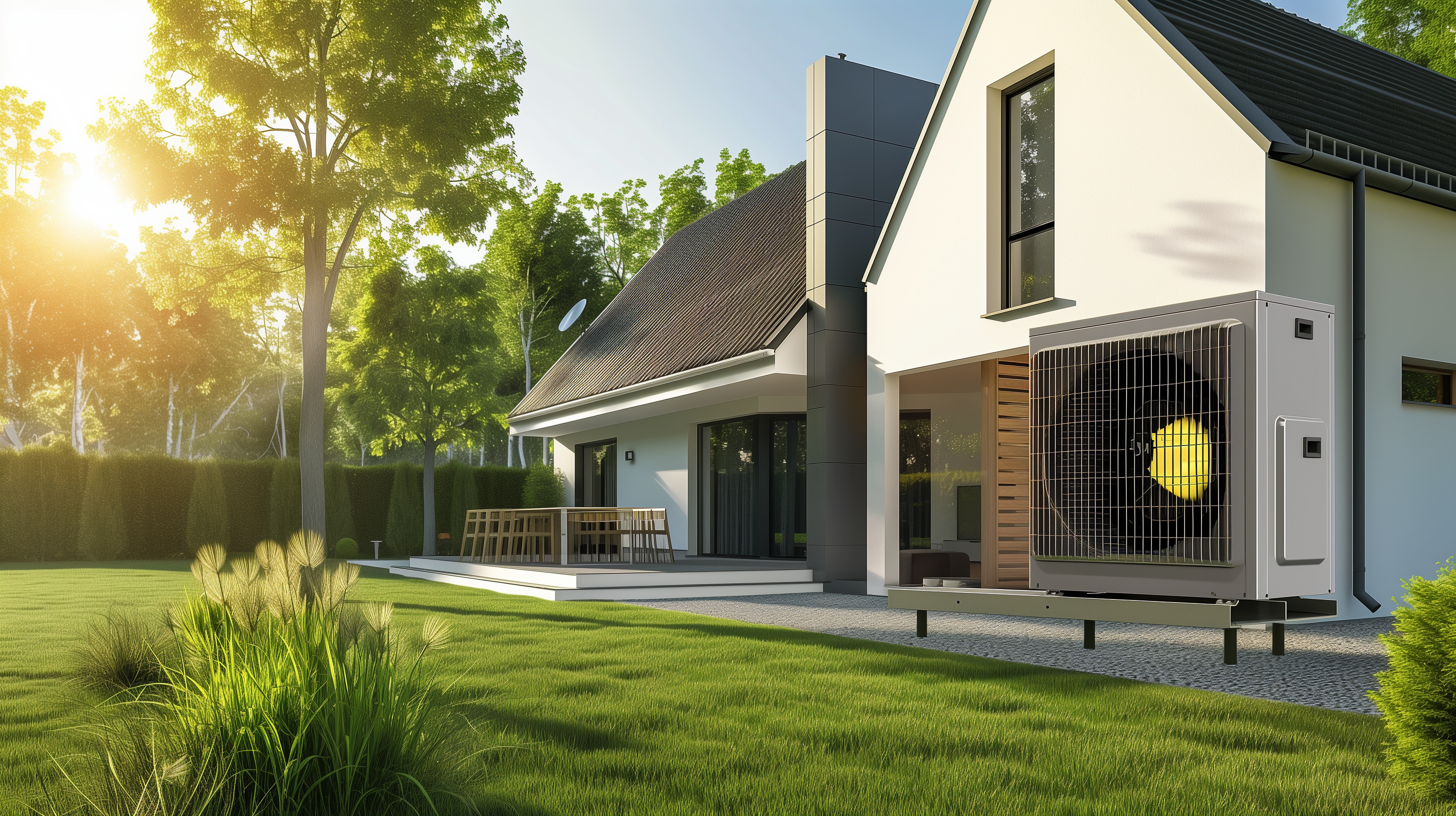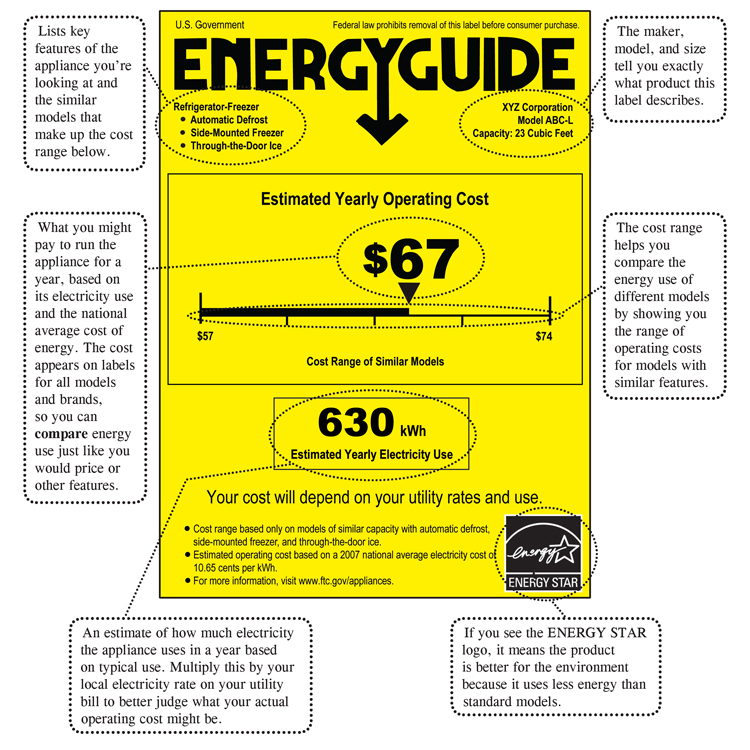Installing a drain or sump pump is essential for homes with basements or crawlspaces to manage excess moisture effectively. Here’s a brief summary of the installation process:
- Select a Location: Choose a suitable location in the basement or crawlspace for the sump pump. It should be the lowest point of the floor, near a wall for easy discharge pipe installation and close to an electrical outlet for power.
- Prepare the Pit: Depending on whether it’s a retrofit or new construction, either dig a hole or create a space for the sump pit. For retrofits, dig a hole 6 to 10 inches deeper and wider than the sump liner. In new construction, make the hole the same size as the sump liner.
- Gravel and Liner: Fill the bottom of the sump pit with gravel and place the liner. Connect the sump pit to the perimeter drain or sub-slab gravel field using a perforated sump pit liner or through-footing pipes connected to the perimeter drain.
- Install the Pump: Set up the sump pump, including wiring and the discharge pipe with a check valve. Ensure it’s properly plugged in and has an unobstructed float. The pump should have a tight-fitting, gasketed cover.
- Cover It Up: Place an airtight cover over the sump pit to prevent soil gases, including radon and water vapor, from entering the home. Ensure the last section of the discharge pipe is connected.
Why Install a Sump Pump?
Installing a sump pump is crucial for managing bulk water in the lowest parts of your foundation, especially below the interior finish floor level. This drainage system helps keep groundwater levels below the interior floor and removes any collected water from the foundation wall drainage system.
Proper drainage is essential, and the sump pump ensures that water is directed away from the building to prevent recycling water through the foundation drainage system. It’s important to have an airtight cover for the sump pit to maintain indoor air quality and prevent harmful soil gases from entering the home.
Ensuring Successful Sump Pump Installation
To ensure the sump pump system works effectively:
- Test the system to verify proper water discharge away from the building.
- Ensure the cover is tightly placed over the sump pit to prevent soil gas infiltration.
Compliance with Codes and Standards
Installing a drain or sump pump may have compliance requirements depending on your location and building codes. These may include:
- ENERGY STAR Single-Family New Homes: Requirement for a sump pit cover with a full gasket seal.
- DOE Zero Energy Ready Home: Certification under ENERGY STAR Qualified Homes Program or EPA Indoor airPLUS may apply.
- EPA Indoor airPLUS: Installation guidelines for basement and crawlspace drainage.
- International Residential Code (IRC): Relevant sections for sumps and pumping systems.
ENERGY STAR Single-Family New Homes, Version 3/3.1 (Rev. 11):
- National Water Management System Builder Requirements.
- Requirement: Sump pit cover mechanically attached with full gasket seal or equivalent.
- Check the ENERGY STAR Single-Family New Homes Implementation Timeline for the program version and revision applicable in your state.
DOE Zero Energy Ready Home (Revision 07):
- Exhibit 1 Mandatory Requirements.
- Item 1: Certification under the ENERGY STAR Qualified Homes Program or the ENERGY STAR Multifamily New Construction Program.
- Item 6: Certification under EPA Indoor airPLUS.
EPA Indoor airPLUS (Revision 04):
- Requirement: Install a drain or sump pump in basement and crawlspace floors, discharging to daylight at least 10 ft. outside the foundation or into an approved sewer system.
- Exception: Slab-on-grade foundations and areas with free-draining soils identified as Group 1 (Table R405.1, 2015 IRC) by a certified hydrologist, soil scientist, or engineer through a site visit.
2009, 2012, 2015, 2018, and 2021 International Residential Code (IRC):
- Chapter 30: Sanitary Drainage, Section P3007 Sumps and Ejectors.
- Chapter 33: Storm Drainage, Section P3303 Sumps and Pumping Systems.
- Retrofit: Section R102.7.1 Additions, alterations, or repairs. Ensure that additions, alterations, renovations, or repairs conform to the provisions of this code, without requiring the unaltered portions of the existing building to comply with the requirements of this code, unless otherwise stated.
- Appendix J regulates the repair, renovation, alteration, and reconstruction of existing buildings and is intended to encourage their continued safe use.
Please refer to your local building codes and regulations to ensure compliance.
Retrofit Existing Homes
For existing homes with basement or crawlspace moisture issues, especially seasonal dampness, consider retrofitting a drain or sump pump. General instructions for installation can be found in the scope tab. Additionally, assess hazardous materials and safe work conditions when working on existing home components.
Remember to follow relevant guidelines and regulations for retrofit projects.
For immediate service or consultation, you may contact us at Allied Emergency Services, INC.
Contact Information:
- Phone: 1-800-792-0212
- Email: Info@AlliedEmergencyServices.com
- Location: Serving Illinois, Wisconsin, and Indiana with a focus on the greater Chicago area.
If you require immediate assistance or have specific questions, our human support is readily available to help you.
Disclaimer: This article is intended for informational purposes only. For professional advice, consult experts in the field.










